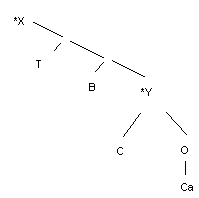Six manuscripts or manuscript fragments of the Old English Bede survive. With their usual sigla, these are:
B = Cambridge, Corpus Christi College 41. First half of the twelfth century
C = London, British Library, Cotton Otho B. xi. Winchester, middle of the tenth century.
Ca = Cambridge, University Library, Kk 3. 18. Second half of the eleventh century
O = Oxford, Corpus Christi College 279. Early eleventh century.
T = Oxford, Bodleian Library, Tanner 10. First half of the tenth century.
Z = London, Cotton Domitian A. ix, fol. 11. Early tenth century.
T is usually accepted as the manuscript with greatest authority. It is not clear when it was produced, though the medieval binding leaves come from the mortuary roll of William Yoxley, abbot of Thorney, suggesting Thorney was its late medieval provenance. Z may be earlier than T, though it is of little use for the establishment of its text, since it contains only three short extracts from the Old English Bede, scribbled with a runic alphabet on what appears to have been a spare leaf from a manuscript since dismembered.
Next in time comes C, though this manuscript was all but destroyed by the Cotton fire in 1731. Earlier, from the thirteenth century, it belonged to the Augustinian canons of Southwick, Its text is preserved in a sixteenth-century transcript made by the antiquary Laurence Nowell, now London, British Library, Additional 43703 (see Grant 1973). B has undergone very thorough study (Grant 1989), but its origin remains uncertain. Like the Exeter Book, it was given to Exeter by Bishop Leofric in 1072. Ca is the latest of the manuscripts and is a direct copy of O made by a known Worcester scribe called Hemming. Little is known about the origin of O.
The relationship between these six manuscripts can be expressed like this:

This is the Stemma provided by Grant 1989 (you could compare Whitelock 1962). Sigla prefixed with an asterisk are manuscripts that we can deduce once existed, but which have been lost. The diagram shows that all the manuscripts derive from the same exemplar, though no manuscript is directly copied from this exemplar. Both B and T derive from *X via an different intermediaries, while C, O and Ca form a small family, with Ca copied from O.